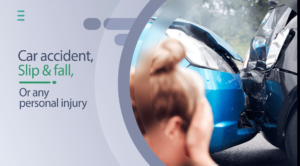Regardless of what was written in the police report, the insurance company of the allegedly responsible driver could claim that the policyholder was not liable for damages.
Suggested actions of claimant that has received notice regarding other side’s denial of liability
Consult with and hire a personal injury lawyer in Etobicoke and it is best if you work with the same lawyer to request proof of the other side’s allegations. It is indicated that the requested proof should contain references to a statute, rule or regulation, one that supports the other side’s position.
Await delivery of the desired documentation. If delivered documentation does not make an explicit reference to a statute, rule or regulation, refuse to accept the adjuster’s allegation.
It is best that you do not get fooled by a letter that has come from the offices of the insurance agency’s lawyers. Do not get fooled by mention of a general rule; demand mention of specifics. You need to work with a retained attorney, in order to prepare an argument against the adjuster’s claims.
A denial could come from the adjuster in your own insurance company.
Suppose that you were rear ended by an uninsured motorist. If you had purchased the uninsured motorist option, you could file a 1st party claim. Suppose, though, that a third party were to allege that an occupant of that vehicle, one that you had pulled behind, had suffered an injury. In that case, your insurance company would want to deduct the money for the damages from your compensation.
This would be another time when it would be appropriate to ask for proof of the presented allegations. The quality of any presented documentation would then determine your next step. You might need to hire a member of the legal community, in order to go after a fair compensation package.
Could you present proof of your claims?
Any claimant that chose to request proof of an adjuster’s allegations ought to be ready for responding to a demand for evidence of that same claimant’s reported damages. That would include evidence of any injuries.
An adjuster might have doubts about the veracity of the other side’s claims, if a third party had introduced allegations of an injury. The adjuster’s doubts would be understandable, if the other side had reported only property damage, but no injuries.
Adjusters’ actions represent an effort to reduce the size of any payoff. That fact should explain an adjuster’s ready introduction of the claims that had been made by a 3rd party. That fact underscores the wisdom behind seeking medical help during the 24 hours that have followed a given accident.
That action would allow for creation of documented proofs of the reported injury. It could be used to fight an effort at reducing the size of a compensation package.




